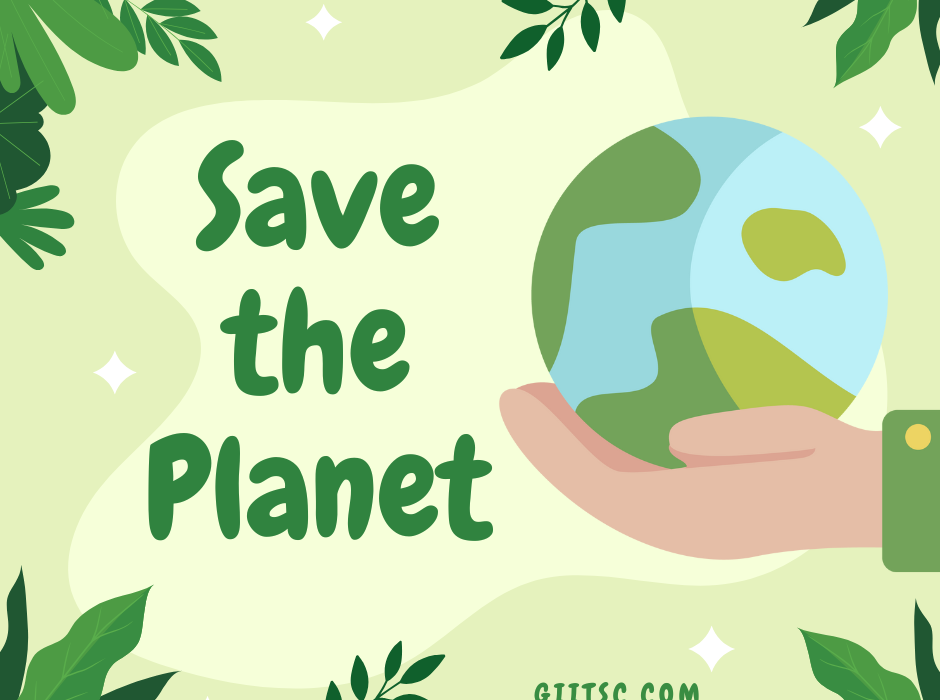🌍 Can AI Really Help Save the Planet or Make Things Worse?
We live in a world facing some of the biggest environmental challenges in history: rising global temperatures, shrinking biodiversity, food insecurity, and resource depletion. While governments and activists debate policies, technology quietly steps in with a promise:
👉 Could Artificial Intelligence (AI) actually become one of the most powerful tools in saving our planet?
The idea might sound futuristic, but AI is already reshaping how we fight climate change and build a sustainable future. Let’s break down the opportunities, the hidden challenges, and what this means for all of us.
🤖 How AI Is Already Fighting for the Planet
AI is no longer just powering chatbots or recommendation systems — it’s being applied directly to environmental challenges. Here are some game-changing examples:
1. Energy Efficiency
- Google used AI to cut the energy needed to cool its data centers by 40%, saving both costs and CO₂ emissions.
- Smart grids in Europe are using AI to balance electricity demand and supply, ensuring less wasted energy and more reliance on renewables.
2. Climate Predictions
- AI-driven climate models are now 50x faster than traditional ones, helping scientists predict hurricanes, wildfires, and floods earlier and more accurately.
- NASA uses AI to analyze satellite data and track deforestation patterns in real time.
3. Sustainable Agriculture
- Farmers are using AI-powered drones and sensors to monitor soil health, predict harvests, and reduce water and fertilizer usage.
- In Africa, AI apps are helping smallholder farmers detect crop diseases early, preventing food loss.
4. Waste Reduction & Recycling
- AI-powered robots in recycling plants are sorting plastics more accurately than humans.
- Retailers are using AI to predict demand, cutting down on overproduction and food waste.
💡 Bottom line: AI is already making measurable impact in energy, agriculture, and waste — some of the biggest contributors to global emissions.
🌱 The Potential Benefits of AI for Sustainability
If applied at scale, AI could:
- Cut Global Emissions: A PwC report suggests AI could reduce greenhouse gas emissions by up to 4% by 2030 — equivalent to the annual emissions of Australia, Canada, and Japan combined.
- Unlock Billions in Savings: Smarter supply chains, logistics, and energy use could save businesses billions while lowering environmental costs.
- Empower Individuals: AI-powered apps can guide consumers to make greener choices — from energy-efficient routes to sustainable shopping.
⚠️ The Hidden Costs of AI
Here’s the paradox: while AI helps the planet, AI itself has a footprint.
- Training AI models is energy-intensive: Training a single large language model can emit as much carbon as five cars over their lifetimes.
- Hardware demand drives e-waste: GPUs, servers, and chips needed for AI accelerate production and disposal of electronic waste.
- Bias in sustainability solutions: If AI is trained on incomplete or biased data, it may recommend strategies that look good on paper but fail in reality.
So the question becomes: Can AI’s benefits outweigh its own costs?
🔄 Making AI More Sustainable
Thankfully, the tech world is waking up:
- Green AI → Researchers are working on algorithms that use 90% less energy to train models.
- Renewable-powered data centers → Companies like Microsoft and Amazon are investing in 100% renewable energy for cloud services.
- Circular hardware design → Manufacturers are exploring recyclable chips and longer-lasting hardware to reduce e-waste.
These solutions show that AI doesn’t have to be part of the problem — it can reinvent itself to become part of the solution.
💡 What Businesses Should Do Now
For companies, AI isn’t just about innovation — it’s about responsibility. Here’s how businesses can align AI with sustainability goals:
- Adopt AI in operations → From energy optimization to supply chain management, AI reduces waste and costs.
- Measure AI’s footprint → Track the carbon impact of your digital operations and look for greener alternatives.
- Tell your sustainability story → Customers increasingly choose brands that prove their eco-values. Sharing how your company uses AI responsibly builds trust.
👩💻 What You Can Do as an Individual
Even individuals can harness AI for eco-friendly living:
- Use AI-powered smart home devices (like thermostats and lighting systems) to save energy.
- Support eco-conscious companies that openly share their sustainability efforts.
- Be mindful of digital consumption — fewer unnecessary cloud backups, fewer idle tabs, less streaming waste energy than you think.
🚀 Final Thought: AI as Tool, Not Savior
AI is powerful, but it’s not a magic bullet. It can help us save the planet — but only if humans guide it responsibly. AI should be seen as a tool in our toolbox, not the sole savior.
The real question is not “Can AI save the planet?” but rather:
👉 Will we use AI wisely enough to let it help us save ourselves?
✅ Engagement Hook (to boost comments & shares):
Do you think AI is the planet’s ally — or just another energy-hungry distraction? Share your thoughts below ⬇️
https://www.linkedin.com/feed/update/urn:li:ugcPost:7375583458598940672

